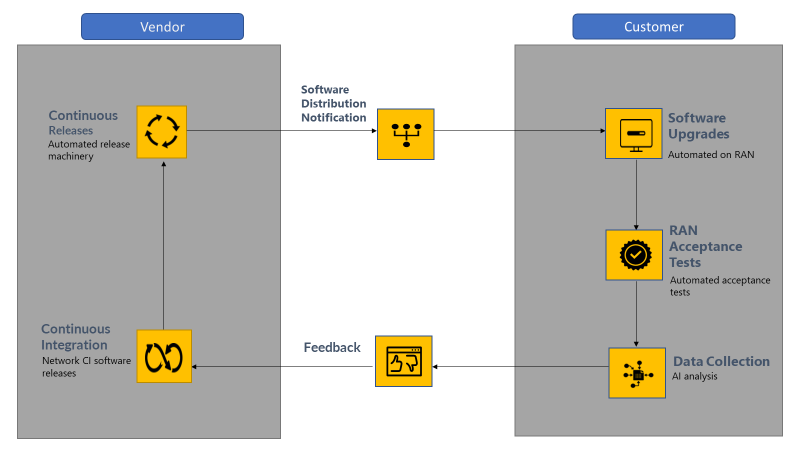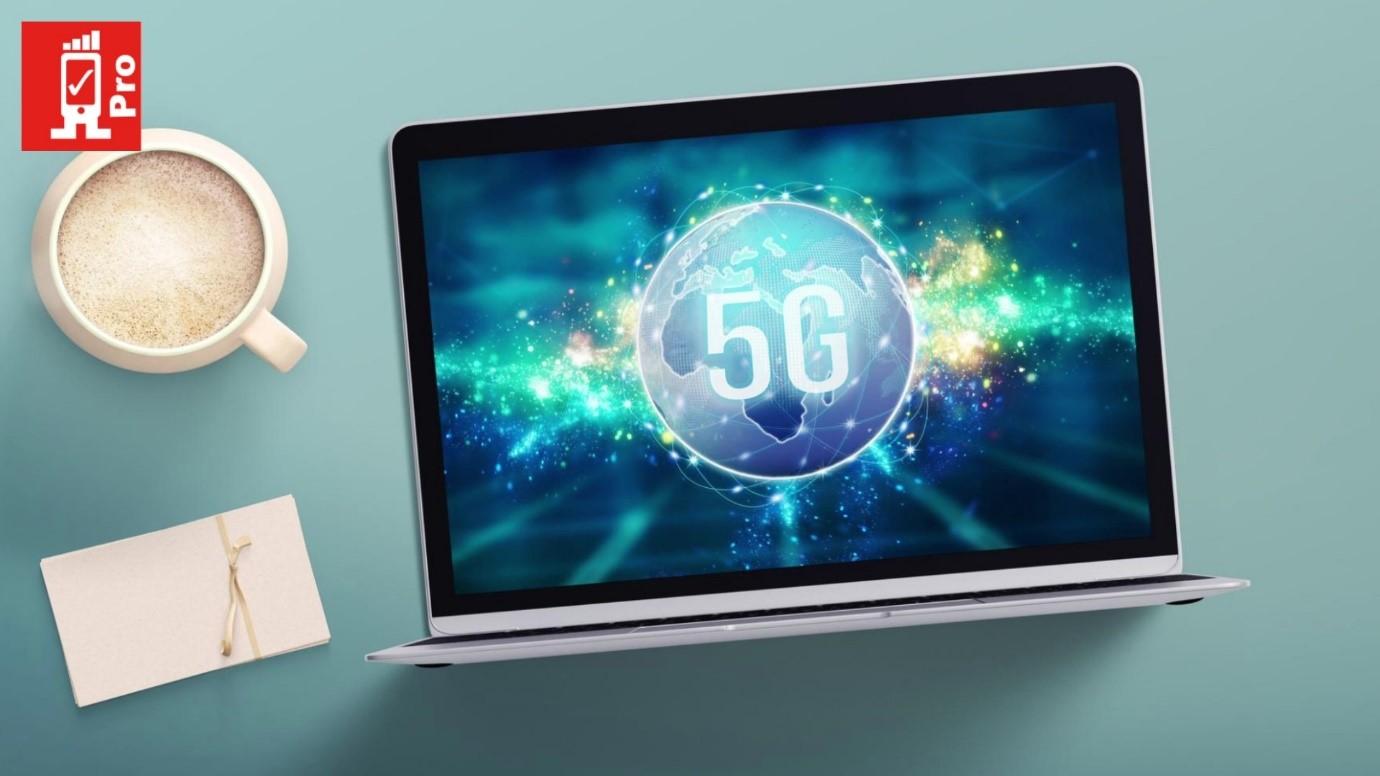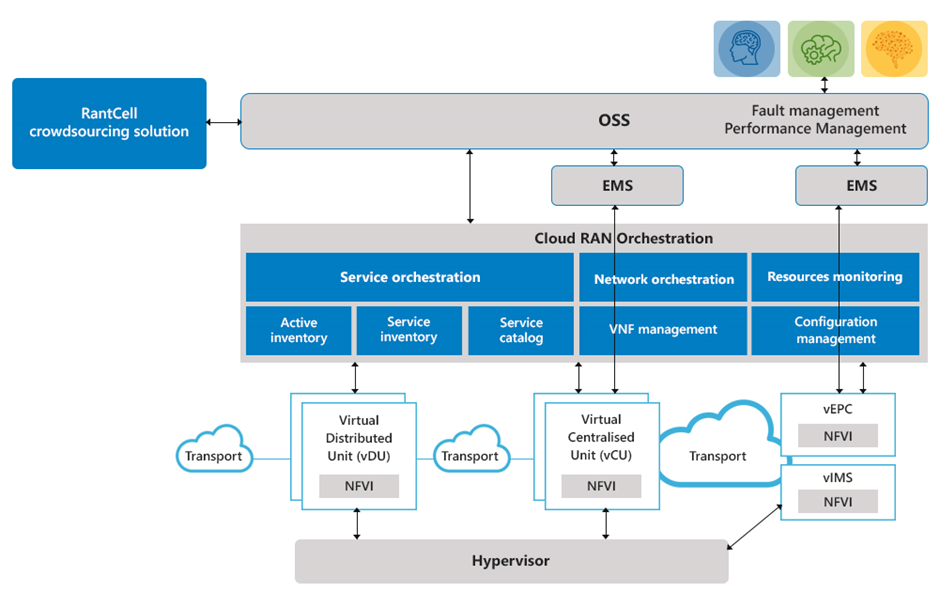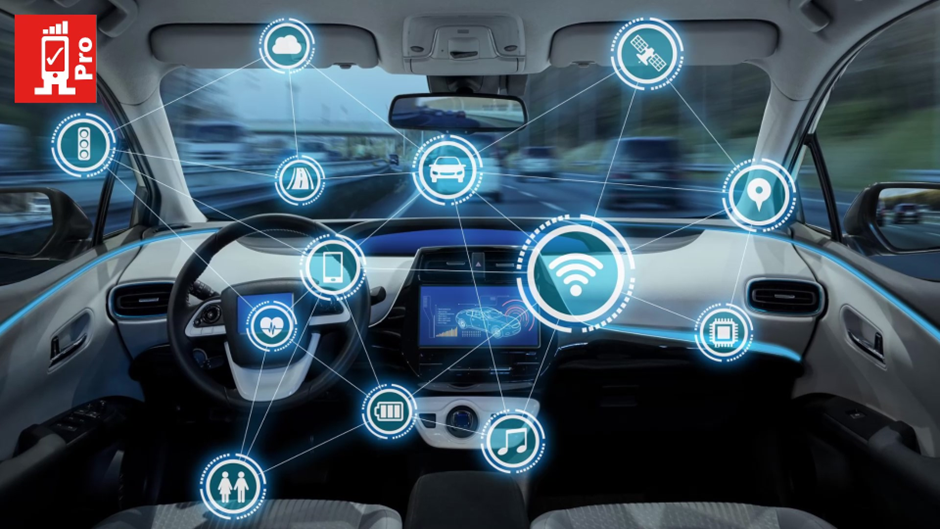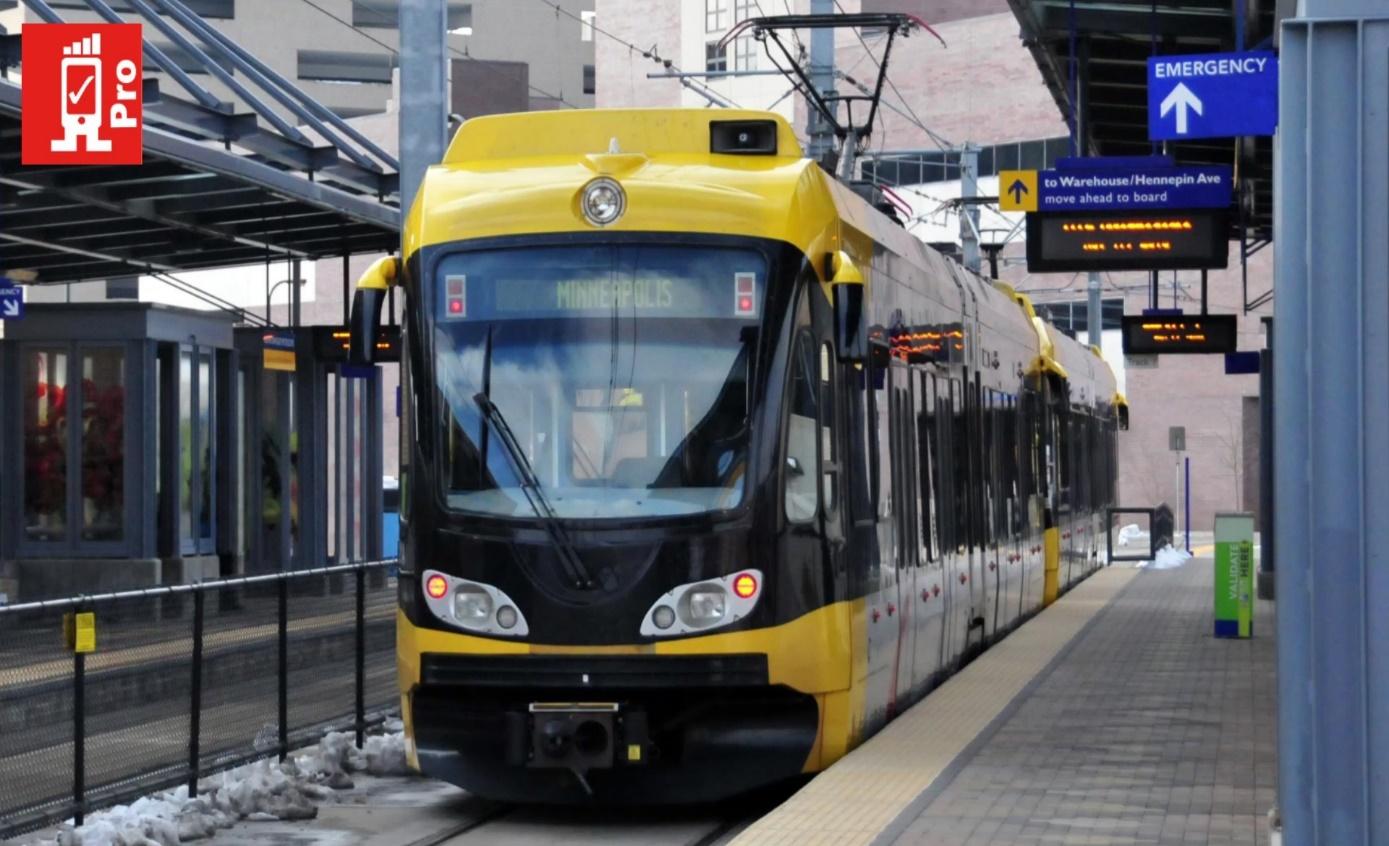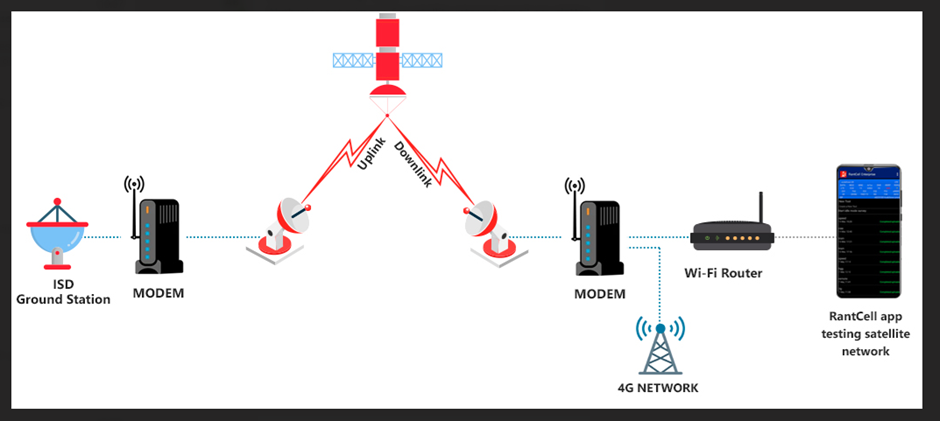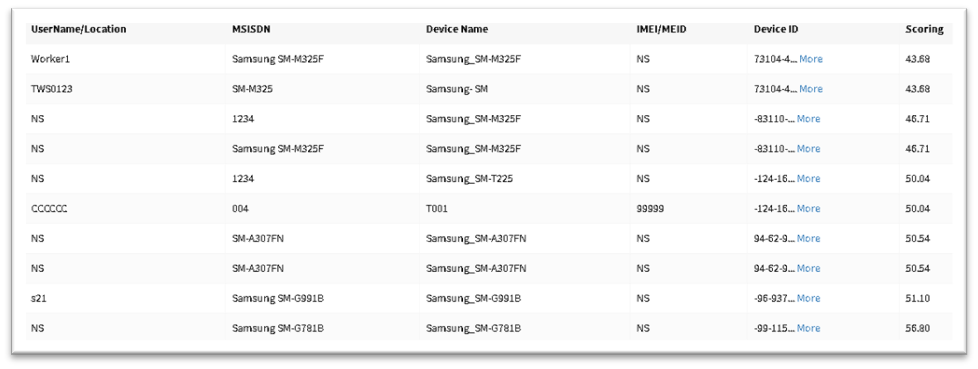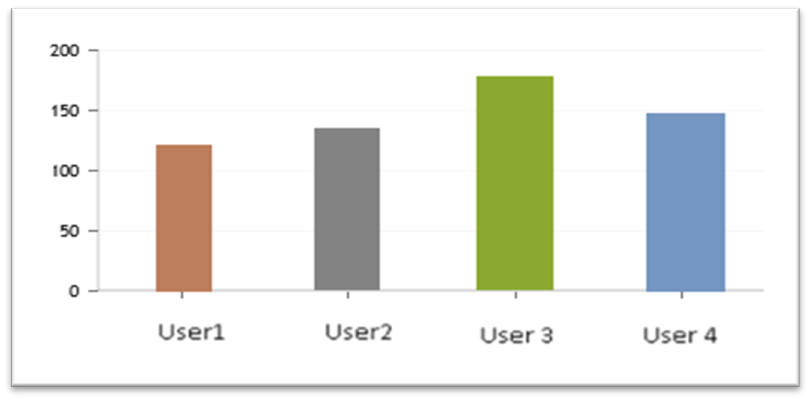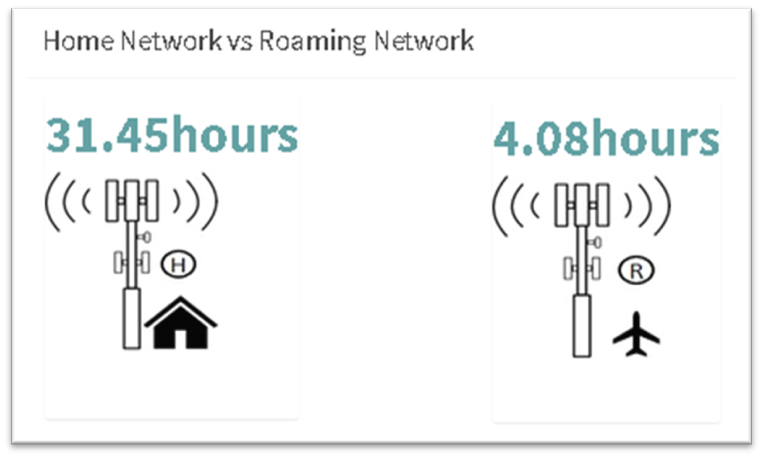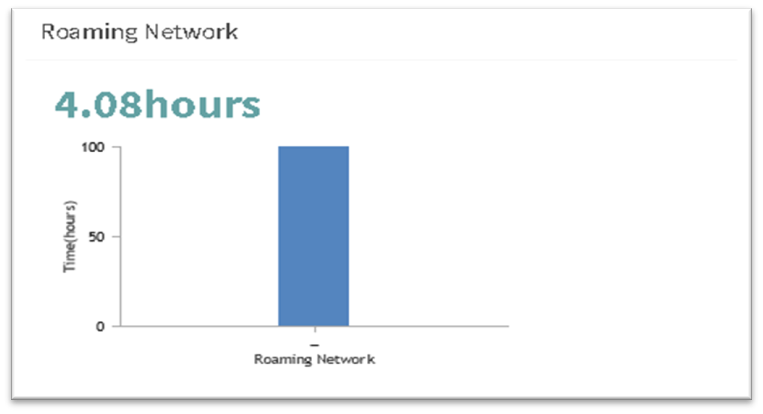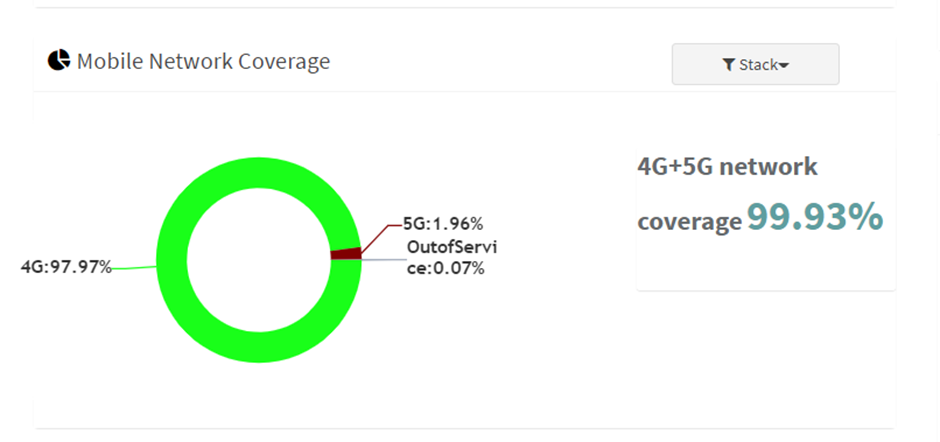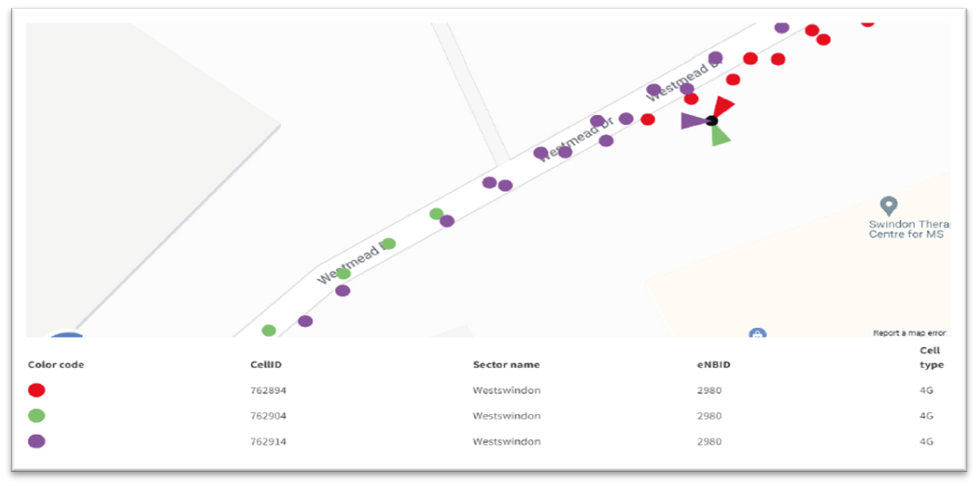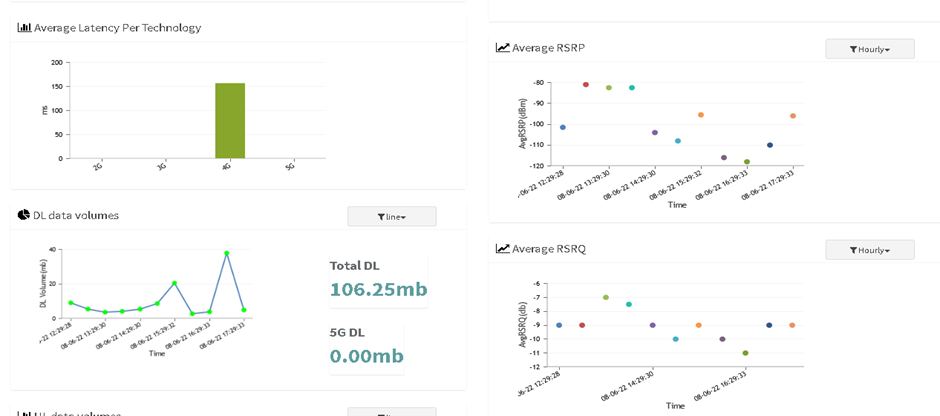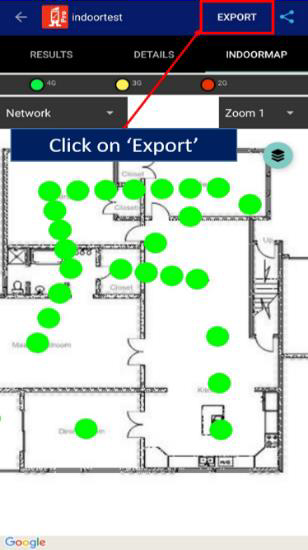- USPs that matter to our customers
- 5G private Network Use case
- CI/CD Automation on 5G
- 5G Investment Opportunities
- ROI usecase for 5G mmWave technology
- OSS Data vs Crowd Sourcing
- Connected cars use case
- Connected Railways usecase
- Use case for satellite internet companies
- Modern-day Construction companies
- Emergency network
- Container logistics private networks
- 24/7 monitor of high ARPU sites
- Friendly user trials
-
RantCell USPs that matter to our customers
-
If you are a mobile operator (carrier), MVNO, Telecom vendor, or Enterprise, multi-location RF testing always cause logistical challenges and cost. With RantCell, these challenges can be avoided by simply deploying the RantCell app to smartphones of staff or customers who are across multi countries or multiple locations within the same country who will be able to perform tests on a wide range of networks 4G/5G, Wi-Fi, etc., and test data centrally available for analysis.
-
The advantage of using such a tool is that it can be deployed anywhere and to anyone resulting in long-term cost savings and quicker analysis of QoE. This will help RF engineers to analyse the data without even visiting different-different locations and give them accurate solutions in terms of their 4G/5G coverage, network speed, capacity, etc.
-
Easy to install and convenient to use
-
With RantCell, data is uploaded in cloud
-
Professional test report can be generated by a single click
-
Highly scalable
-
Continuous benchmarking of network performance, for example- measurement of data throughputs, latency, voice calls every 30mins on network from various locations where test phones are deployed.
-
Alarm notifications when QoE degrade, for example, throughput going below certain thresholds.
-
New IBS solutions or site verifications with continuous tests, helping customers to evaluate QoE KPI trends over a long period of time.
-
Automation is used for monitoring IBS deployments, carrier labs setup for regression testing, Open Ran rural deployments, 5G performance monitoring, private network, and sales purposes.
In today’s world, mobile phone users no longer support their dependability only on brands or prices, rather depend on their loyalty based on the Quality of Experience (QoE), and Quality of Service (QoS) - most importantly a level of satisfaction instead. Therefore, telecommunication players such as telecom operators are concentrating more on customer service as well as customer satisfaction, thereby providing their customers a seamless experience with excellent network connectivity.
It’s hard for any organization to break out from traditional methods and adopt to new methods. With the vision revolutionizes the network testing industry with its easy-to-use solutions, RantCell experienced tech team has developed the application with innovative and effective network testing capabilities, which has led to many of the leading Regulators, Operators, and Network solution providers opting RantCell as their preferred choice for their network testing needs.
Here are some of those top use cases commonly used by our customers across the globe.
1.Multi-location:-
2. Time Saving:-
Performing network testing through the traditional method is very time-consuming because it consists of a lengthy process to complete the test. This technique is a process of something mentioned below:

So, to save your time, RantCell is an excellent option to choose from. With such a tool, continuous tests can be performed, and as a result, users will be more productive, working whenever, wherever, and however, they need to. Get a look at the process given below to know about why the non-traditional method with RantCell is time-saving:
With RantCell, our customers are benefitted from a shorter process and therefore take a shorter time identifying network issues and RCA. Please find the RantCell process flow as below.

Some of the important features include-
3. Benefit of Automation: -
Automation features are inherent in the RantCell solution with any level of purchase. Many of our customers are using RantCell automation, i.e., continuous test feature, which is automated tests based on user-specified intervals (15min, 30min, etc.) on any selected network and performed indefinitely. With the RantCell RAN automation, the continuous test can be done, which is automated tests based on user-specified intervals (15min, 30min, etc.) on any selected network and performed indefinitely.
4. Costing: -
In recent years, we have seen an enormous increase of customers opting for the RantCell solution from small, medium and large-scale companies. This is mainly due to the app is economically priced, which helps them optimise their network testing budget and also facilitates companies to function efficiently by reducing their operational costs.
These are the main reasons why Regulators, Operators and other service providers are moving towards solutions such as RantCell, which fulfil their testing needs without having a major impact on their budget. We have seen increased adoptions from broadband providers who integrate networks for rural areas, IBS solutions providers, large enterprises with private networks, small cell or site infrastructure businesses, regulators and MNOs.
-
-
RantCell use cases for 5G private networks
-
Provides real-time QoE data: RantCell solution enables private 5G network owners’ real-time monitoring of QoE data like latency, data speeds, voice KPI, etc., network performance of various locations, and making of alarm notification when performance degrades below the threshold.
-
Non-technical people can use it: The modern yet mobile-phone-based RF measurement software RantCell can capture key measurements and only the relevant KPIs, which are enough for enterprises to evaluate the network performance and identify issues – the best part is that non-technical people can also use such tools for QoE data collection. But, in the case of the traditional tool, it tends to generate large amounts of detailed data that results in time-consuming to get test results and spending of huge in computing and skilled resources.
-
Inbuilding survey of Private networks included: When the traditional tools are very complicated for the 4G/5G private network indoor measurement as they lead to additional licensing costs. But, for the same purpose as private 5G network testing, RantCell pro app is the ultimate option to choose from – it has inbuilt functionality to upload small to large floor plans on RantCell cloud. With RantCell, there is no limit to uploading floor plans as multi-story buildings, factory floor plans, etc. can be uploaded in JPG format, and the number of locations measured worldwide.
-
Any Android device and Worldwide testing RantCell tool can be mass deployed efficiently on any Android mobile device available locally. Many of the large enterprises will have private networks across the globe or within country, measuring 4G/5G private networks every location using traditional tools will pose logistical and cost challenges. With RantCell platform measurements can be done any location with any android device and analysis of test data can be done central location on cloud which brings down significant reduction in costs.
There was a time, the options for a private wireless network were limited only to Wi-Fi technologies like LoRa or Sigfox, so the deployment of a 4G private wireless network was almost nil in several organizations. Further, due to certain factors such as the coverage and security limitations, incompatibility with public cellular networks, and most importantly, high ongoing maintenance costs, the use of a private 4G network was difficult for organizations, be it a factory, office buildings, transit hub, or another facility. With 5G technology enhancements in cellular network coupled with citizen band spectrum such as CBRS that uses 5G technologies has begun to be deployed lately by many enterprises.
According to Research and markets, the market size for 5G private networks is predicted to reach USD 36.08 billion by 2030 across the world and is also anticipated to increase the Compound annual growth rate (CAGR) by 47.5% from 2022 to 2030.
Moreover, the deployment of private 5G will meet several mission-critical applications with its low-latency connectivity and secured network. Some of the widely used 5G use cases are mining, healthcare, manufacturing operations, logistics, agricultural production, oil, and gas, etc.
When the scope of 5G private networks is increasing, testing at every phase of the mobile network rollout is crucial as it will help operate smart organizations in a faster way and create awareness of issues efficiently. Before you implement, pre-deployment 5G network testing is required to ensure that it can meet all the use cases and maintain a robust network coverage and assured user experience on network. So, to comprehend this requirement, many of our enterprise customers use RantCell for network monitoring and measurement needs.
Following top 4 use cases supported by RantCell when it comes 4G/5G private networks.
-
-
CI/CD Automation on 5G
-
The concept of continuous integration (CI) and continuous deployment (CD) allows MNOs to update software promptly and effectively.
-
Setup time for the test environment is reduced.
-
Improved agility and less time-to-market by curbing the release cycle.
-
Time required for the production release certificate gets reduced.
-
Curbs time required for the automated data deployment process.
-
Streamlining test cycles and automating the provisioning of the environment with one-click deployment.
-
In addition, CI and CD ensure an ongoing flow of new features and bug fixes via the delivery method.
-
Operating environments are more stable.
-
Get more time to innovate rather than spending time on maintenance and fixing issues.
-
Automation leading to an enhanced security scan.
CI/CD automation is a technique in telecom, stated as continuous integration and continuous deployment – used to deliver apps often to customers with the introduction of automation, which applies into the stages of app development. Continuous integration (CI) and continuous delivery (CD) represent operating principles that the app development team uses to deliver code changes more frequently and reliably. CI/CD automation on 5G allows software development teams to meet business requirements while ensuring code quality and software security.
CI/CD framework is useful for the telecom industry's digital value chain in terms of automated development, delivery, and deployment of software. Some of the factors that complement the concept of CI and CD are continuous delivery, continuous integration, and continuous deployment. CI/CD is the keystone of the telecom transformation as the 5G rollout software update and delivery processes for new software versions and services can be automated with CI/CD. This will benefit the MNOs in terms of code quality, and rapid bug fixes. Further, it ensures that MNOs can build the right thing for their users and improve the entire software development process.
benefits :
5G MNO and private networks play a pivotal role in CI/CD automation because the network can serve numerous use cases due to its low-latency connectivity and secured network. So, when the importance of private 5G is rising, especially in the continuous integration (CI) and continuous delivery (CD) phase, network testing and monitoring are essential just to maintain a robust network 5G/4G coverage and guaranteed QoE on the specified network. For this, you can use RantCell as a network measurement tester, which is convenient to use, cost-effective in price, and accessible remotely. Try it today!
-
RantCell use cases for 5G Investment
Opportunities
-
MNOs can launch new enterprises such as smart cities, and smart factories with 5G services.
-
5G SA is completely cloud-native architecture (CNA), which introduces new ways to develop, deploy and manage services.
-
The architecture enables end-to-end slicing to logically separate services.
-
MNOs can decide on a variety of deployment models such as on-prem private cloud, and public cloud to meet their business objectives by choosing a cloud-native microservices-based architecture.
-
5G network slicing allows for the isolation of bandwidth, processing, storage, and Traffic, which lets resources be allocated for QoS-specific needs.
-
Network slicing is a key facilitating technology to make 5G use cases profitable.
-
Network slicing tool helps carriers unlock countless new revenue opportunities, mainly in the beneficial enterprise space.
-
Ultra-high density that supports more devices to get connected simultaneously in 1 million nodes per km2.
-
Ultra-low energy connections that support giving 10+ years of battery life to the IoT devices.
-
Ultra-low complexity (10s of bits per second) and deep coverage.
-
Provides high monetization opportunities with Industry 4.0 applications such as healthcare, agriculture, education, factories, connected offices with sensor-based building management, transport systems, etc.
-
Offering enterprises, a greater level of control over deployment, security, and device choices.
-
Enabling highly targeted indoor/outdoor coverage with reserved capacity.
-
Provides more speed, and independence and requires less power than its public counterpart.
5G is the 5th generation of wireless technology that brings many more opportunities in the telecom sector. 5G drives the largest business opportunities and empowers Ultra-Reliable Low-Latency Communications (URLLC), Millimeter-band radios (mmWave) with lightning-quick speed, mMTC, Massive Multiple-Input Multiple-Output (MIMO).
Investment in 5G networks is opening several prospects in terms of operating autonomous vehicles / autonomous driving, connected industrial equipment to virtual reality, Internet of Things (IoT), thus, 5G will help reduce the carbon footprint of networks and address the digital divide. How will all these things be possible through 5G? The wireless 5G networks offer faster speeds (10x to 100x faster) with 10x low latency creating possibilities for use cases mobility technology, lower latency, etc. Mobile network operators (MNOs) can avail several use cases and allied opportunities when they invest in 5G technology infrastructure.
According to Singtel, 5G’s ROI market is projected to reach $320.1 billion by 2026. 5G's capabilities create new monetization pathways for CSPs including MNOs and enterprises - 5G is set to transform industries and restructure business models. For example, the private 5G networks’ market segment will reach $109 billion by 2030, especially in enterprise industry fragments as the report of ABI research states.
Following are the revenue models for CSPs and enterprises -
5G SA:
Network slicing:
Massive IoT:
Private networks:
There is no doubt that 5G is the most powerful network that will rule as a strategic weapon for both economic and security initiatives in the future. Yes, 5G is making many more opportunities for MNOs along with creating ways for themselves in terms of acquiring customers, suppliers, and partners at a time. So, when the 5G network is rolling out across the globe, stable network connectivity with good 5G/4G coverage, higher speed, and greater capacity are the crucial areas to take care of. Here comes mobile network testing and monitoring solution with RantCell as many of our customers are already using it for network monitoring and measurement needs. This tool is useful in providing QoE on mobile networks, thereby providing improved network solutions to the end-users.
-
-
ROI usecases for 5G mmWave technology
-
Data rate: 10 Gbps or higher
-
Bandwidth: 100 MHz to 1GHz bandwidth due to carrier aggregation sub 40 GHz frequency and 500 MHz to 2 GHz bandwidth without carrier aggregation.
-
2 meters (indoor) to 300 meters (outdoor) is the distance coverage
-
Frame topology: TDD
-
CP-OFDMA < 40GHz SC> 40GHz is the modulation types
-
When it comes to frequency bands, the bands are split into “less than 40 GHz” and “40GHz to 100 GHz” frequency ranges.
-
mmWave 5G includes wide spectrum segments and provides a large amount of spectrum and capacitance at the shortest distance.
-
Uses Massive MIMO to increase capacity and coverage.
-
Provides higher bandwidth to hold more subscribers. Hence deployment can be made in areas with high concentration of users for example stadiums, railway stations etc.
-
The millimetre wave frequency band can provide higher bandwidth compared with sub-6GHz and millimeter due to wider bandwidth, the higher speed rate can also be supported by 5G mmWave.
-
Wi-Fi hotspots services backed with 5G mmWave APs
-
The 5G mmWave network supports up to 400 meters of multi-Gigabit backhaul. Solution is useful when terrestrial backhaul deployments are challenging.
-
The narrow bandwidth in the millimeter range makes it suitable for use with small cells which can be used for in-building solutions where high data throughput is required.
-
Galaxy S21 Ultra
-
Galaxy Note 20 Ultra
-
Google Pixel 5a
-
Galaxy A32 5G
-
One Plus Pro
-
LG V50 Thinq 5G
-
Samsung Galaxy S10 5G
-
Samsung Galaxy Note 10 5G
-
iPhone 12 and iPhone 13 series models, etc.
5G mmWave is also known as the millimeter band, advanced cellular technology now being used in wireless ecosystems and continues to gain momentum worldwide. 5G mmWave provides access to the large bandwidth and capacity above 24GHz, which are available in the frequency band – this can deliver extreme capacity, ultra-high throughput, and ultra-low latency. International Telecommunication Union represents 5G mmWave as the extremely high frequency (EHF) band, which is a spectrum band with wavelength ranging from 30 GHz to 300 GHz. And for such technology mmWave, 5G can have several times the network speed of 4G LTE.
5G mmWave helps achieve a substantial return on investment. Due to the cost-effectiveness of deploying 5G mmWave, improved user experiences and satisfaction for businesses and consumers are rising. This not only takes the lead to significant monetization potential but also offers new opportunities for operators and enterprises.
Features –
Advantages of 5G mmWave:
The potential of 5G will be increased more when accessed to mmWave frequencies. The mmWave can deliver the highest levels of 5G innovation by offering services in terms of lightning-fast download speeds, huge capacity, and the lowest latencies. Since 5G mmWave is supported with high bandwidth, high transmission speed and low latency, hence effective for live streaming, real-time surveillance camera, ultra-high-definition video, and AR/VR for superior online gaming experiences.
In terms of higher bandwidth, 5G mmWave is not only useful for improving sensor resolution and reducing latency but also suitable for densely populated areas with high demand for stable network connectivity. For example, Industrial IoT, smart manufacturing, and shared workspaces will be benefitted from mmWave – 5G mmWave will give you greater network speed as per your expectations. Furthermore, 5G mmWave use higher spectrum frequencies hence they have a higher network speed rate, compared with 3G, 4G, and even the Sub-6 frequency band in the early stage of 5G deployment.
5G mmWave is a unique yet new technology that requires a significant amount of effort during the network rollout, and this will need network testing and monitoring solution to provide QoE and QoS to the end users.
List of devices that support mmWave supported by RantCell:
Now, mmWave-capable devices are available in the market and some of them include-
Network band locking feature not available in the Android 12 version of Samsung devices:
The band locking feature is now disabled by Samsung devices, especially which have the latest operating systems - this is a piece of important information to spread awareness among customers. For example- Samsung Android version 12 has disabled such functionality, called network band locking. Therefore, it’s advisable not to update the latest version of Samsung mobile phones, especially for whomsoever requires this band-locking technology.
-
-
OSS Data vd Crowd sourcing
-
Performance and capacity monitoring
-
Maintaining network inventory
-
Provisioning services
-
Performance monitoring on 4G/5G nodes
-
Configuring network components
-
Managing faults
-
Operational day-to-day activities are required for Telcos, which ensure that their mobile networks and services are running perfectly.
-
An area having very good OSS KPIs might still have users experiencing poor coverage, quality, low downloading/browsing speed, etc., thereby resulting in customer dissatisfaction and customers moving out to another operator.
-
Lack of location information of failures.
-
Business needs to rely on drive testing for real user experience measurement.
-
No insights into competitors’ strengths and weaknesses.
-
Field engineers need to be deployed to customer locations to measure actual issues on the network.
-
Measurement of accurate end-user experience information such as Latency, RAN technology, data throughput, coverage, etc.
-
No cost or negligible cost compared to RF drive testing as users are performing tests and sending measurements.
-
Indoor and outdoor KPI data provide operators opportunity to enhance their network indoors.
-
Performance of UE OEMs over network
-
Issues such as coverage holes, data speeds, swapped sectors due to cross feeders, and cell over shooters can be identified and optimized without actual drive testing.
-
Identification of the top worst locations where users are likely to leave the network.
-
Competitor strengths and weaknesses create upselling opportunities.
-
Long-term national level map data about network information for own networks and competitor networks which provide marketing intelligence for sales.
OSS is used to monitor and manage large communications networks and to provide business support to the providers of telecommunications, data communication, and network services. OSS is a kind of automation system that can take information automatically from the cell tower such as network inventory, performance data, service provisioning, network configuration, fault management, etc.
How OSS plays in telecommunication?
The role of OSS in telecommunication plays as the back-end support system for all operational activities within a mobile network. OSS is essential to the 5G/4G network architecture of any mobile network that makes use of software to monitor, configure, and manage the operational activities within a network. Further, it monitors the performance of the network in the following ways.
Some of the drawbacks of RAN KPI monitoring via OSS
These drawbacks can be addressed through crowdsourcing solutions.
Crowdsourcing use cases:
Conclusion:
OSS (Operational Support System) is required for all kinds of operational activities, which occur in the telecommunication sector - monitor, control, analyse and manage network; for example, the performance of the 5G/4G network. However, in recent years, telecom operators adopting smart crowdsourcing additional enrichment data on top of OSS data in identifying user experience issues and improving the quality of the network by optimizers. In addition, crowdsource platforms will save significant costs on drive testing and field testing. Crowdsourced data can be used not only in Radio Optimisation but also used in RAN Ops, Marketing, and Sales verticals of the network carrier. Conclusion is that OSS data is a must have for mobile network operators and crowdsource data will significantly enhance insights into real user experience on network which overall empower operators to provide superior network experience.
Click here to learn more
https://rantcell.com/crowd-sourcing-mobile-network-testing.html -
-
RantCell use case for Autonomous and Connected
Cars
-
Auto Crash Notification: In case of any emergency, the auto crash notification feature will send your GPS location via SMS notification to your emergency contacts. In addition, this feature also enables you the deployment of airbags in the car during any road accident.
-
SOS / Emergency Assistance: While driving on the road and facing any kind of trouble, you can just press the SOS button on the app, which will connect the support centre to assist you immediately.
-
Valet Mode: If your car is on valet mode while driving, that means the feature ensures your privacy as in to limit your car speed by locking the AVN screen.
-
Geo-fence Alert: With such feature, you can set a digital perimeter for your car so that you will get alert at regular intervals in case the perimeter gets breached.
-
Speed Alert: It will help you set a speed limit to avoid over speeding while driving, which means this feature will enable you to be alerted if speed is exceeded.
-
Stolen Vehicle Notification: The app with such feature will enable you to receive a notification immediately if any outsider enters your car.
-
Stolen Vehicle tracking: If your car is stolen, vehicle tracking feature will let the police find the car.
-
Hands-free Calling: While driving, if you need to call someone, then just say his name or mobile number that will connect you with the concerned person.
-
VR POI: Through voice command, you can search for the Point of Interest (POI) like fuel pumps, eateries, hospitals, etc. and without even taking your eyes off the road.
-
VR Time & date: When you are driving, use voice command if you need to know the about time and date.
-
VR-Weather: You can get yourself updated with weather conditions of varied locations just by using voice commands throughout the driving. This feature will let you know about the weather status either for the current day or for nine days in the future and in the past.
-
Driverless cars concept: Autonomous vehicles are possible to operate with the driverless concept due to the widespread adoption of 5G as it has low latency and high accuracy. Due to such features as low latency, 5G autonomous vehicles can connect, manage, and respond to the data in real-time even in 5 milliseconds.
-
Sim card technology-based vehicle: As a sim card (or e-sim technology) is inserted in the autonomous vehicles. AVs use sensors, that not only generate loads of data but also transfer this data quickly in terms of handling, processing, and analysis.
-
Transform the commuting system: 5G connected cars/autonomous vehicles will transform the way of our commuting system as they will save on accident avoidance annually and reduce car insurance costs.
-
Vehicle-to-everything communication(V2X): This is possible due to the reliable internet connectivity on 5G, and vehicle-to-everything communication is something by which a connected car or any autonomous vehicle can easily spread data from other nearby vehicles, infrastructure, road sensors, and more.
-
3D road mapping: This feature provides autonomous vehicles with a 360-degree view of the roads, which ensures self-driving accuracy. This also enables vehicles such as connected cars to maintain situational awareness, for instance, the vehicle with 3D road mapping technology will let the vehicle autonomously drive the car or to automatically stop the car if there is an obstacle.
-
RantCell is used in identifying vehicle embedded modem issues, for example comparing data rate, and latency of modem versus standard devices while driving or while remaining stationary. Low performance on modems means the full potential of CVs/AVs cannot be used.
-
While selling CVs or AVs it's important to consider which MNO SIMs to be used for that specific region. Randomly selecting MNO SIMs and ending up with poor services means most of the Connected Vehicle (CVs) functions do not work therefore leaving customers dissatisfied with their cars. Hence important for auto manufacturers to build their own data about connectivity before choosing the MNO service. RantCell enables auto manufacturers to build their data about mobile networks.
-
We currently support AV trials to identify the best-connected route between the start and end points of the trial route. We are also developing APIs to identify the best-connected route using AI/ML technologies for our customers.
Today’s world is connected! When almost everything is connected through the internet, then why not the cars? Yes, Connected Car and Autonomous Vehicle Technology has become the new norm in the automobile industry. The future of connected cars is bright – according to Statista, a report reveals that the market distribution of connected cars in the market is expected to increase by 70% in 2025. The evolution of connected cars is predicted to be high in the future by increasing vehicle safety, improved traffic flow, and improved driver experience. Connected cars are not only safer for road users but also less harmful to the environment, which will enhance our overall transportation experience.
Smart features of connected cars
SAFETY –SECURITY –VOICE COMMAND VIA AI-BASED TECHNOLOGY –AUTONOMOUS VEHICLE –The connected car technology is possible because of 5G/4G connectivity – 5G network will enhance the connected cars even to smarter and enhanced experience. With 5G data, connected vehicles (CV) or autonomous vehicles (AV) will be able to detect dangerous or risky road conditions swiftly as the road sensors could convey street data to the road contractors by enabling them to address such issues consequently.
When 5G/4G is playing a pivotal role in the domain of connected car technologies, network maintenance (monitoring and testing) is the foremost part to look after. For all connected features to work seamlessly a stable network would be required. Therefore, car manufacturers will have to emphasize Network Testing.
RantCell use cases that matter to autonomous vehicles manufacturers
-
-
-
RantCell use case for Connected railways
-
Maintenance staff with connected rail car technology will get to know about vulnerabilities in advance, and schedule maintenance before any kind of breakdown occurs.
-
5G/4G connected rail lessens operational costs, IT expenses and gives commuters fast, reliable Wi-Fi.
-
It makes railroads a whole new line of revenue opportunities.
-
Increased passenger capacity is possible through automation as a connected railway can handle several additional trains at a time; no limitation should be there in the case of the full capacity of staff.
-
Connected experience to passengers generates new revenue streams, also enhanced passenger experience will also lead to increased frequency of usage of railroads.
-
Connected stations with a fast reliable 5G/4G network will be able to speed up services, and enhance security, thereby opening the way for creating new revenue-generating opportunities.
-
Passengers in a rush or who need to immediate booking tickets can buy tickets at digital kiosks instead of waiting in a queue at the counters to get the tickets. The digital kiosk concept is possible with the aid of high-speed network 5G/4G, and passengers can even get real-time updates, be it on arrivals status or interacting with a representative if any help is required.
-
Video surveillance automates the tracking of suspicious behaviour on the station premises such as someone who leaves a package on the platforms or someone who lingers aimlessly in or about a place so that such activities will immediately bring it to the attention of the monitor even on a single screen.
-
Railway managers analyse the data collected from their connected systems and get new insights that can improve every aspect of operations, such as keeping up with changing passenger needs to improve the routes and their safety.
-
Connectivity along the railroads creates new revenue example sales of data plans for passengers. For example, 5G connectivity can be used to provide high capacity in passenger cars via 5G Wi-Fi hotspots for mobile devices and laptops.
-
better connectivity in the trains improves all the operations effectively, for example, GPS tracking lets the operations managers get alerted about the status of running trains' whereabouts.
-
With a high-speed Wi-Fi network, train operators can communicate with the operations centre in real-time to notify managers about any problems if anything occurred.
-
Though sensors are associated with parts of the train, technology can communicate with the maintenance department if any part needs to be replaced, eliminate downtime, and reduce service costs.
-
High-speed wireless communication on the train improves security - smart video cameras not only identify problems but also generate alerts in real-time. Further, it also enables concerned railway staff to contact emergency responders without delay (footage can be captured automatically, which is beneficial for the staff to easily review incidents when they need it).
-
Benchmark railroad data throughput and coverage performance. This is to measure the available MNOs user experience and select the best MNO.
-
Measure the performance of purpose-built 4G/5G coverage along railroad.
-
For maintenance of purpose-built network and reporting.
-
Crowdsourcing of data and deeper analysis of railroad networks.
Connected railways are the most efficient concept when compared to traditional ones. Why does so? The major reason is that the traditional railway model uses unreliable systems that don't communicate with one another devices or concerned professionals, which may cause maintenance problems and delays that frustrate employees and discourage passengers to make the journey. So, here comes connected railways that not only connect trains and associated equipment, but also link up tracks, stations, and the operations centre and solve many of such problems using the 5G/4G network.
Highlights of 5G/4G connected railways –
Connected Station
Connected Train
A connected railway model is possible because of the 5G/4G network which has super-fast speed, low latency, and reliable architecture. So, to maintain the stability of the network and provide assurance on the quality of the network, 5G/4G drive testing is crucial. RantCell solution has been currently used by some of our customers for the following use cases.
-
-
RantCell use case for Satellite Internet
Companies
-
Internet speed will not be affected during peak use times as satellite internet connections can carry high bandwidth usage.
-
Satellite internet does not require any terrestrial connectivity hence faster to set up.
-
Services could be availed on land or sea in any location on the globe.
-
GEO satellites would always have high latency as they tend to be located at 26000km altitude, so the latency is dependent on the speed of light, which would approximate 650ms of delay for IP packets to travel back and forth.
-
LEO satellite providers will have low latency compared to GEO satellites. However, data throughput will be limited to the density of LEO satellites and capacity as beams of such satellites will cover a larger area.
-
Bad weather impacts the signal path of the satellite internet connection. For example- during rainstorms, and severe bad wind, users will experience poor quality internet.
-
Poor latency or high ping rate of satellite internet will affect users to send and receive files (not in a faster way) as the latency and ping rate is essential to test how long it takes to communicate between another computer, device, and server in a network. For example, for gamers who plan to use VoIP services, satellite internet is not good for them due to its poor latency, or a high ping rate.
-
Minor obstructions such as branches or buildings can affect the quality of your signal. For example, users who have taken a satellite internet connection will face major problems, especially if they live in areas covered with woods, metal interference, etc.
-
Satellite internet is quite expensive as compared to cable internet. For example, users will pay around $100 per month for speeds of 2 Mbps when they use satellite internet, an amount that is twice what cable internet users pay.
Satellite Internet is a type of internet service used to deliver broadband Internet services to hard-to-reach users in the under-served regions of the worldwide level. Satellite Internet service is the only viable option for places where internet infrastructure is underdeveloped and capable enough to deliver high-speed Internet access to those who are not able to access terrestrial links such as wired, fiber, and cable options as they live in rural parts of the globe. Satellite internet is a wireless connection spread across satellite dishes that beams data directly from your provider to a satellite in space and eventually to a satellite dish at your home or business - this is how it works.
Why use satellite internet ?
The purpose of using satellite internet is to provide easy access to communication networks to the people who live in hard-to-reach geo-locations. Further, satellite internet service can be utilized in those places where various types of land-based internet (Terrestrial) connections like broadband, fiber optics, cable internet, etc., are not established; those areas with slow Digital Subscriber Line (DSL) or unavailability of cable and fiber connections or have limited reach. Using Satellite Internet, people can access email, video streaming, establish communication to remote locations such as oil rigs, research units, visit social media platforms and connect to distance learning courses, and many more. In addition, some of the other pros include –
Some of the important features include-
Faster internet speed, low latency, and high throughput are must-have factors for satellite internet service. But the reality is satellite internet faces trouble with internet speed and latency.Some of the
satellite internet cons are as follows:
Despite all these drawbacks mentioned above, satellite internet is a fantastic option for users living in rural areas or other locations where the terrestrial network is not available. However, the only problem that matters is the quality of performance and stability of the satellite network.
Satellite backhauls for 4G networks
In recent years there have been significant technological improvements in satellite-based broadband, and the number of providers is on the rise (for example, Starlink, OneWeb, etc). Many of the MNOs have been using satellites as backhaul for 4G base stations in locations where terrestrial links are not possible. By doing so, MNOs can not only increase their network coverage in rural or extremely hard-to-reach areas but also enables communities to use smartphones for their day-to-day life. Many of the current 4G base station manufacturers now support satellite-based transmission, however, 4G base stations need stable satellite links with minimum bandwidth and latency requirements across the clock to provide voice and data services.
Following setup shows on how validation can be performed on satellite-based networks
The test setup shown above can be used to validate satellite network KPIs such as data speeds, latency, etc., for a longer period. Automation validation is possible with RantCell, as you can validate your network performance, quality assurance, and quality of experience (QoE), thereby gaining a histogram of data to compare and confirm if the solution is suitable for customer needs. It's also possible to validate 4G base stations' end-user performance by running automated voice and data tests.
-
-
RantCell use case for Modern-day Construction
companies
Every business needs to have reliable network connectivity! Why does network connectivity important in business? Successful business collaboration is built due to robust network connectivity, whether it’s about effective communication with customers/employees or how quickly collaborate with one another (voice calls or business calls) and get services delivered. You can also network face-to-face at conferences and through industry associations.
Modern-day construction companies who are involved in building such as offices, manufacturing facilities, recreation centres, shopping malls, stadiums, etc., at the end of construction to have problems with wireless network connectivity issues such as mobile network will end up dissatisfied customers on those facilities. Therefore, every building needs to provide high-speed, reliable, and portable onsite internet 4G/5G coverage to their clients. For this, indoor testing solutions (every type of business building) during pre-construction and post-construction of the building should have conducted to provide an excellent wireless network connectivity experience to the customers.
What are the benefits of pre-construction and post-construction survey?
Pre-construction survey: - A Pre-Construction Survey consists of a field review of the existing location of the building where construction activities are about to begin or are planned. The objective of the survey is to measure multi-operator mobile network coverage and user experience. – using this data RF engineers run the simulations reports of inbuilding coverage identifying if the network will be reliable. Some of the benefits are pre-construction survey benefits may also suggest whether indoor antenna or indoor RF solutions is required to use and facilitate with mobile friendly network or mobile signal. Recommendations on indoor antenna installations that might impact mobile network coverage. Also help strategies to choose the right mobile operator for their IoT needs, smart building solutions, for example, remote monitoring requirements, card payment machines, parking ticket machines, or EV charging stations where payment transactions are carried out.
Post-construction survey: - This survey is done once the building gets built or when a purpose-built indoor 4G/5G coverage solution is being installed and put into service. This survey is beneficial to know about the actual coverage of the indoors of the specified building and user experience. For example, if any clutter (obstacles that will impede a signal's path) hurdles the network connectivity within the building, the post-construction survey will help. Post-deployment surveys also are often called validation surveys. The purpose of the post-construction survey is to ensure the wireless network deployed that meets customer or client requirements in terms of mobile network user experience. This survey will identify if there are any further improvements could be made to the indoor mobile network.
RantCell helping building owners in Indoor survey
Building owners of several businesses need indoor survey solutions to detect internet connectivity-related issues and provide an excellent wireless network connectivity experience to their tenants. Many of our clients are using the cost-effective RantCell solution to perform walk tests in commercial buildings such as office buildings, hospitals, shopping centres, factories, etc., to survey mobile networks.
Some of the important KPIs that RantCell use while doing indoor or walk test survey is RSRP KPI statistics, RSRQ KPI statistics, PCI KPI statistics, LTESNR KPI statistics, data speed (download speed test & upload speed test), voice calls, SMS test, ping (latency), dropped calls of 4G (LTE), 5G (NR), Wi-Fi and CDMA mobile network by performing repetitive speed test, SMS test, HTTP download test, etc.
Well-connected building facilities to benefit from improved productivity and happy tenants.
Conclusion
We live in a world of Wireless Communication that is part and parcel of our lives. People depend on wireless communication in their day-to-day life for several things like communication, doing business, online purchasing, social media, etc. Yes, the future is wireless! Wireless technology has been evolving from 2G to 3G to 4G to 5G, and it will continue to expand into the future - wireless communication has immense potential to change the way we live, work, and play over the next several decades.
For this reason, construction companies must have wireless communication technology included in their strategy to deliver their mobile-friendly smart building to their customers.
-
RantCell use case for mobile based emergency network
-
Robust and high bandwidth network connectivity will benefit the first responders, such as police forces to contact the police control room, especially when handling a disaster, crimes, and other such offenses on a specific spot. For example, body cameras police are the best video streaming solution over 5G that will enable the police force presented in the control room to help those police personnel who are dealing with the emergency. With the help of a body camera, the police force from the control room will be able to assess the situation where the incident occurs so that they can send more police force or make better decisions to help their co-workers and control the situation.
-
High-speed emergency network communication will also enable first responders such as fire rescue to help manage and sustain response operations during a fire hazard. In any emergency and disaster (natural or human-made) environment, there is a chance that mobile network communications can become congested in disaster areas however, prioritized traffic will enable pre-emption of non-emergency traffic over mission-critical calls made by first responders. For example, drone-based cameras connected over 5G could be used in multistorey fire scenarios to extinguish the fire with more accuracy and reduced time.
-
Good network connectivity or maintaining a robust ambulance emergency network is a must in terms of real-time communication between driver and ER (emergency room). For example, ambulance personnel can share significant information about the patient with doctors who are waiting in the ER room for the arrival of the patient so that they can plan lifesaving medical procedures.
-
Maintenance of 4G base stations and transmission units : Regular maintenance, which includes field visits and battery checks, temperature checks, received power (TX), etc.
-
Drive testing to measure user experience : Regular drive test is carried out that measures user experience in high footfall areas in malls, roads, temples, and any public places. In addition, regular benchmarking is also carried out with respect to other operators.
-
Continuous coverage improvements : For coverage improvement, regular optimization and new site rollout is carried out continuously.
-
Radio network optimization – Existing sites are regularly optimized to serve the best possible area, and this optimization includes soft (parameter level) and hard optimization (done by field visit).
-
Rollout – If the existing infrastructure/site is unable to cover any particular location, then a new site is the solution - a green field site will be planned by the operator for this location.
Communication networks play a crucial role in public emergency and disaster management – emergency communication network services are playing as a backbone in the prevention/mitigation of disasters/community emergencies (natural or human-caused). So, choosing an existing infrastructure 4G/5G wireless network with prioritized traffic is the best way to extend the coverage to provide solutions for emergency services.
Some Use cases benefit from using mobile networks over traditional Emergency Push to Talk Wireless networks for first responders -
Maintenance of Emergency network
Mobile network-based Emergency Network requires operations and maintenance teams to maintain the network, usually done by the hosting operator, and any significant Service Outage requires immediate action. For telecom operators, successful network maintenance does not only include optimizing communication networks but also the people, processes, and systems that manage telecom networks.
What are the main activities done by the operator to maintain the network?
How RantCell crowd sourcing beneficial for coverage and monitoring of user experience KPIs on the emergency network?
RantCell crowd sourcing app that can be deployed on measuring devices used by first responders who collect significant amounts of information related to the quality of experience on the emergency network in terms of signal level, data bandwidth, and latency about location. This enables network owners to identify no coverage spots in urban and rural areas where network coverage needs to be improved. The crowd sourcing solution can help authorities to build their own map data about network availability at the state or national level. This will significantly remove the need for traditional drive testing considering responder units are constantly on the move 24/7.
The solution can also provide information if the mobile network coverage is reliable or poor or non-existent ahead of time before reaching the emergency spot. This enables the first responders to strategies the communication back to the control room, for example- video streaming might not be possible, however, the voice would still be available at the emergency spot.
Crowd sourcing would be more efficient and economical than using the traditional tools and investing in skilled manpower in the form of a drive test by an RF engineer to carry out these tests. In addition, crowd source solutions can help with various other use cases complaint handling by network users, proactive approach to improve the network, identify cities having worst experience, authorities, and network service providers to reduce the monitoring costs and efficiently identify their network issues and improve user experience.
-
-
RantCell Use Cases for Container Logistics Company
Private Networks
-
During the storage of containers (warehousing) and movement of containers, ports generally face network issues in terms of coverage and wireless propagation. Ports face communication issues during transportation/shipping services, supply chain solutions, and digital solutions. Therefore, high-speed network connectivity from the ports’ end is a must (proper functionality of tracking software) and requires good QoE and QoS to the end customers or devices.
-
Unstable uplink connection, for example, uninterrupted uplink connectivity required for video supplies which help remote control and automation. For the safety and security of ports or container logistic companies, CCTV cameras, and video analytics are playing a major role. So, this is the reason, ports require greater network connectivity to ease their logistics-related operations digitally and effectively.
-
Poor network capacity and performance of commercial cellular networks can affect external factors (nearby cruise ships) of container logistics.
-
Any network-related complaints coming from multiple locations by business users of the network take longer to resolve, specifically when QoE data is nonavailable.
Container logistic companies are among those industries that have joined the digital revolution with the help of automation, remote control, and connectivity with 4G/5G private networks. Connected applications are essential for container logistic companies in terms of delivering efficiencies, reducing costs, and improving profitability and safety. For this, they need better, more reliable data performance – choosing of 5G Private network with greater flexibility is the best solution for container logistic companies.
What are the pain points container logistic companies facing due to network connectivity issues in operations?
So, to manage the complexity of wireless and identify connectivity-related issues in warehouses and terminals, port operators need network monitoring and testing tools, which can measure network coverage and QoE such as latency and data speed. RantCell is being strategically used by some of our customers to monitor multiple ports or terminals by logistic companies. 4G/5G coverage measurement for various sites of container logistic companies are available at their fingertips, which reduce the risk of business interruption and improve network performance.
RantCell Solutions for Logistic Companies –
1. Best/Worst User for each KPI : RantCell identifies such users with the worst experience in the network. For example, a top worst user in the network by the weakest signal level, or the top worst user in terms of high latency.

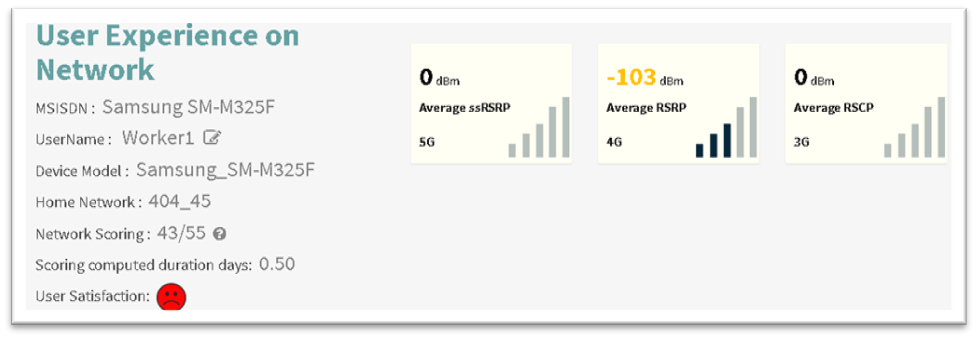
2.Best/Worst Location (Cluster) : Solutions to identify locations having the lowest coverage or no coverage at all within the private network clusters.
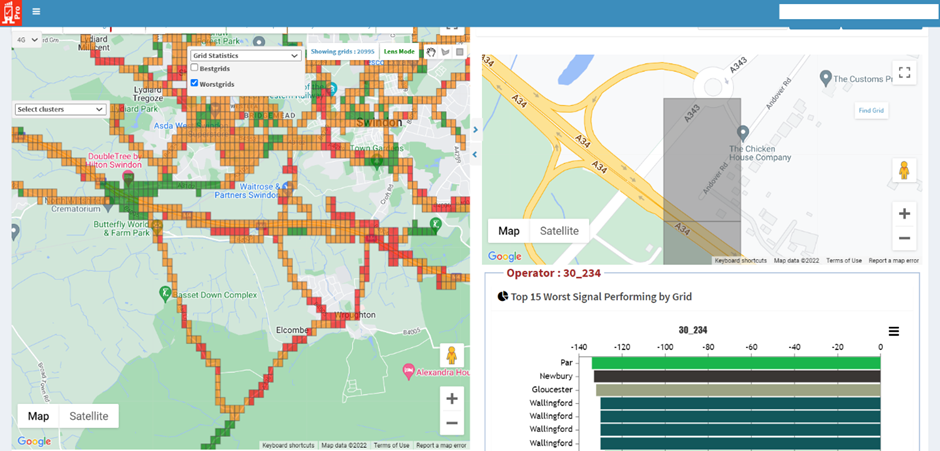
3. Best/Worst Users in a User-Defined Group (Scoring) : RantCell’s Internal scoring Mechanism is useful to score and identify Platinum users’ QoE. Ability to sort users based on scoring and example identification worst experience user with lowest scores.
4. Best/Worst Data Size : RantCell responds to the third-party system together with the Best/Worst devices based on data usage or locations where most data are being downloaded or uploaded.
5. Users not on a specific network : For example, the solution can provide details on how much percentage of the user was on the roaming network (ex-public network) and on the home network, which will be a private network. Or a list of users who are not on a private network.
6. Availability KPI : For each user’s network availability KPI on private networks, it’s also possible to get a percentage out of service for the last 24 hours or several days.
7. Busiest cell IDs (cell loading) : For cell Loading, identify a list of cells with the highest number of users.
8. User Experiencer per User (UUID) : RantCell can locate a single user’s QoE based on its UUID by responding to the third-party system with that UUID QoE KPIs like Latency, Throughput, Coverage, Quality, Technology, etc.
9. Indoor floor plan-based coverage : RantCell's Indoor Floor Plan Based Coverage Tests are helpful for those users who have multistorey buildings, as they can get results per Floor Plan basis.
-
-
Remote real time monitoring of VIP 3G/4G Base
station or high value customer locations 24/7
- 1. Setup permanent RTP (Remote test point, with smart phones) setup in high value customer’s locations such as VIP sites (3G and 4G sites). Monitor in excess of 1000 such locations.
- 2. Get real time alarms or service degradation on voice and data.
- 3. Call service failure such as call setup failure, dropped calls and CSFB failures can be detected in real-time.
- 4. Real-time alerts on data throughputs degradation upon below defined threshold limit.
- 5. Sleeping cells scenarios.
- 6. No data scenarios.
- 7. Enables operations team to receive real time service degradation alarms compared to PM OSS Data which likely to have latency. Also enables the operations team to perform on demand data and voice testing once the diagnostic actions are performed on site.

-
Strategies your friendly user trials on 3G,4G and 5G
networks and monitor KPIs from 1000+ user devices. (For Ex: Rural 3G/4G deployments and small
cells deployment)
- 1.Example of rural 3G/4G deployments trials validation.
- 2.Small cells/DAS deployment validations with friendly users.
- 3.5G CPE Wi-Fi hotspot deployment validation with friendly users.
- 4.Remotely run on demand tests on friendly user devices and monitor QoE KPIs.
- 5.Generate real test traffic on by scheduling concurrent test on friendly user devices using RantCell admin panel.
- 6.Analyse crowd sourced information network in real time on RantCell dashboard panel and analyse Quality of Experience(QoE) KPI's such data throughputs, CSSR and coverage measurements etc.
- 7.Identify network issues during trial fix and re-validate improvements by running tests on network using friendly user’s devices.
- 8.Significantly reduce field trial costs by not having to visit field trials.



